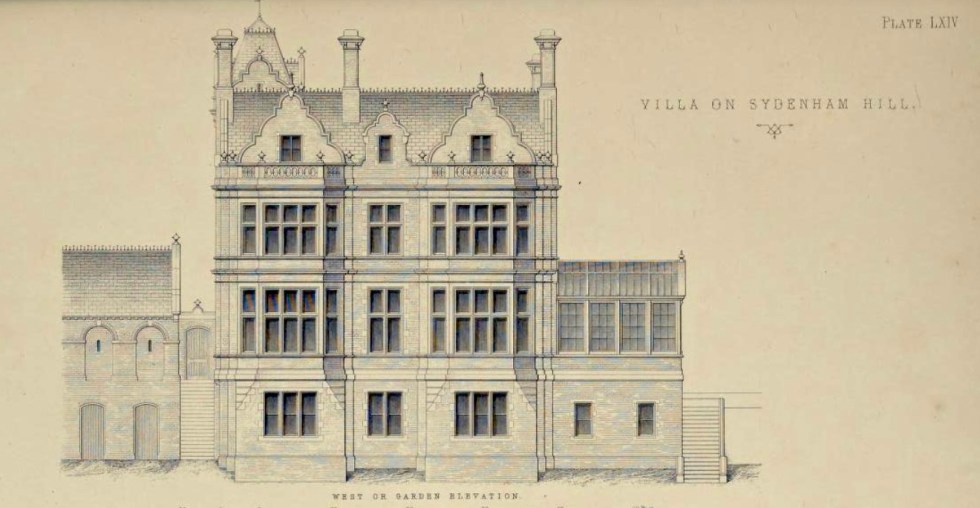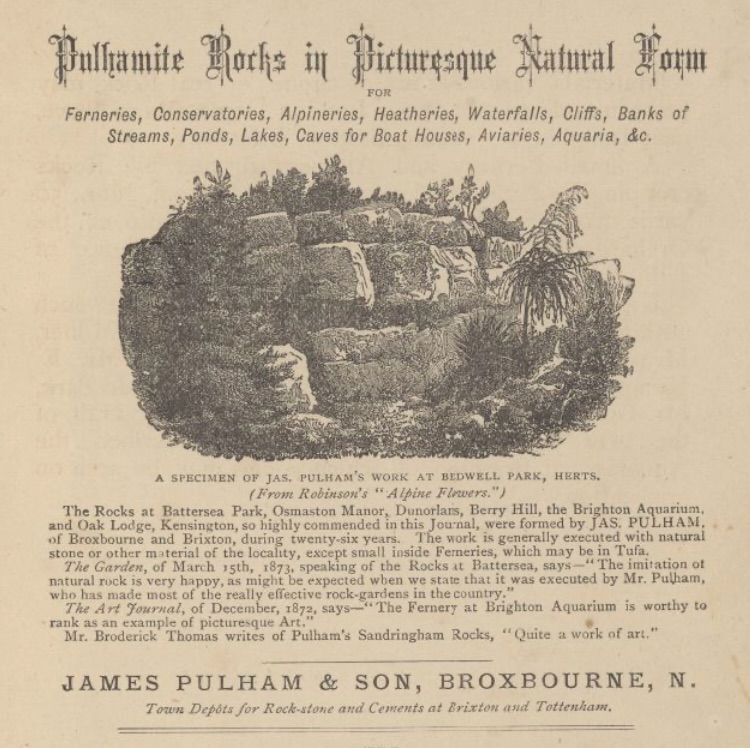Tucked in woodland off Sydenham Hill in south London sits a sham ruin. Although it is now hard to imagine, it was once a feature of the ‘beautiful grounds’ of Fairwood, an elegant newly-built villa. This area of London was very much in vogue in the middle of the 19th century, after the arrival of the relocated Crystal Palace put it on the map, and Sydenham Hill became home to a number of distinguished family homes.

Fairwood was built in the early 1860s for David Henry Stone (1812-1890), a businessman, attorney and solicitor who played a significant part in civic life as a magistrate, an alderman, and eventually as Lord Mayor of London. The substantial villa was built to a design by the architectural practise of Banks and Barry: Charles Barry (1823-1900), son of the great architect Sir Charles Barry, worked extensively in the Dulwich and Sydenham area of London, and himself lived a few doors away on Sydenham Hill. The house, stabling and conservatory at Fairwood cost just over £5775 pounds to build, the architects attributing the high cost to the quality materials used and also the ‘large excess of London prices over those prevailing in the country’.

Stone commissioned the garden designers and artificial rock specialists James Pulham & Son to create a ‘Rocky Stream’ in his grounds, as well as what were simply described as ‘Ruins’. A pamphlet written by James Pulham sometime around 1877 records this work being executed in 1863 and 1866, but sadly little other information has survived. Pulham designs often featured local stone, but when unavailable they used brick or rubble coated in their proprietary cement, which could be modelled to perfectly mimic natural rocks. The brick core of part of the Sydenham folly can clearly be seen in the photo’ above.

James Pulham himself described the role such ruins played in a garden or landscape: ‘Emotions of sublimity or beauty are awakened in the mind by castles or other ruins; also by other picturesque objects, as a portion of which may be consistently added to the scene – as an ancient tower on a precipice, forming a portion of the ruins of an old castle – or may be the ruins of an abbey, church, or ancient bridge; all such objects, which, by themselves, strike the imagination as picturesque’.

Stone was elected Lord Mayor of London in 1874 and, with the Mansion House at his disposal, sold Fairwood that same year. The particulars described it as a ‘a very superior family residence’, which had been decorated in the very best taste, ‘regardless of cost’, with all the latest fashions such as decorative Minton tiles. The house was set in over one and a half acres of ‘pleasure grounds’ with a terrace and ‘beautiful woodland walks’. The house changed hands again in 1908, when it was illustrated in the press:

Stone died in 1890 at St Thomas’s Hospital, where he was Treasurer and had an official residence. The houses on Sydenham Hill were mostly held on 99 year leases granted by the landowners, Dulwich College: after the Second World War there was little interest in taking on the leases, and the houses were almost all demolished.
Today, Sydenham Hill Wood is managed by the London Wildlife Trust and is a very popular amenity. The foundations of the grand villas are lost under a blanket of ivy and shrubs, with only the occasional glimpse of a piece of masonry poking through the undergrowth. Only the folly stands as a reminder that part of this woodland was once suburban gardens in the very latest taste.

There’s more on the woodland here https://www.wildlondon.org.uk/nature-reserves/sydenham-hill-wood-and-coxs-walk
David Henry Stone’s cousin was the Portsmouth MP William Henry Stone, who came into possession of follies when he bought Leigh Park (now Staunton Country Park) in Hampshire https://thefollyflaneuse.com/the-shell-house-leigh-park-havant-hampshire/
Thank you for reading and please scroll down to the bottom of the page if you would like to share any thoughts or comments.






Garance says:
Fascinating, thank you!
During your research, were you aware of any connection with Eleanor Coade (1733-1821) and her Coade Stone (https://historicengland.org.uk/advice/technical-advice/buildings/decorative-features/coade-stone/).
Although Pulhamite seems to have come later and rather more rustic, I wonder if any similarities – materials or process between the two?
Editor says:
Good evening Garance. I’m not aware of any direct link between Coade and the Pulham family, but I’m sure the Pulhams must have known about her work. I’m no expert on the technical make-up of the two artificial stones I’m afraid – both were carefully guarded secret recipes I suspect. A fascinating subject.
Edmund (Ed) Stone says:
Another great ‘Folly’ article – thank you for this latest one on Sydenham Hill. I was so pleased to see the photo and print of “Fairwood” house, built by David Henry Stone. I have been searching for an image or photo of this house for some time, to add to my Stone family tree. Thank you also for the link to the “Shell House” at Staunton/Leigh Park.
Editor says:
Hello Ed. Very pleased to have added a little to your fascinating family history. Thanks for getting in touch.